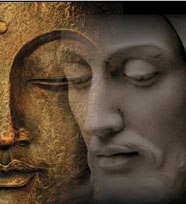Just as over the past century we have seen global acts of humanitarian interventions extend its reach to the protection of all innocent civilians against atrocities – shifting the value of life from the exclusive protection of civilians of western hegemon to people of all culture, race, and creed – Jeremy Rifkin, author of Empathic Civilizations, takes this progression one step further. Rifkin argues that human empathy is beginning to extend to all of life in the biosphere, giving rise to the prospect of truly “global consciousness”. At first, this understanding appeared truly revolutionary. It is true that in the modern age, we are beginning to prioritize and give attention to the protection of welfare of other animals and life forms on the planet. And that this shift is seen through the work of NGOs, governments, and local groups. However, it is very easy to forget the global influence and dominance of the western world and western ideals – especially growing up in the western world. It wasn’t until later that week, when watching a segment of the documentary series Wildest India, that I fully recognized the Western binary in Rifkin’s argument. India, is a vast country, consisting of rich culture and spirituality. Something I found particularly interesting about the documentary was the portrayal of the relationship between the citizens of India and the wildlife around them. It appeared as though individuals understood and appreciated the natural beings around them, erecting temples for animals common thought of as being pests in the Western world such as rats and snakes. The locals valued and cherished the local Rhesus macaques of Jaipur, although a nuisance during the summer seasons when food is scarce, are welcomed and fed by the locals. There seemed to be a harmonious society where all natural beings coexisted with mutual dependence and appreciation for one another. When comparing the spirituality of the West (predominately Christian, but also a percentage Judaism and Islam) it centers on man and the acts of man, where Hinduism (dominant in India) identifies animals and animal qualities in deities. This then raises the question, is Rifkin’s hypothesis really a recent breakthrough? Or is it the Western world’s attempt to catch up or return back to the lessons of the Old World and some of the most ancient of civilizations? This question is summed up greatly in a piece showcased at the Seattle Asian Art Museum in Volunteer Park, Capitol Hill, which displays a oscillating image of Jesus Christ and the Buddha – highlighting the differences and the similarities between the two.

